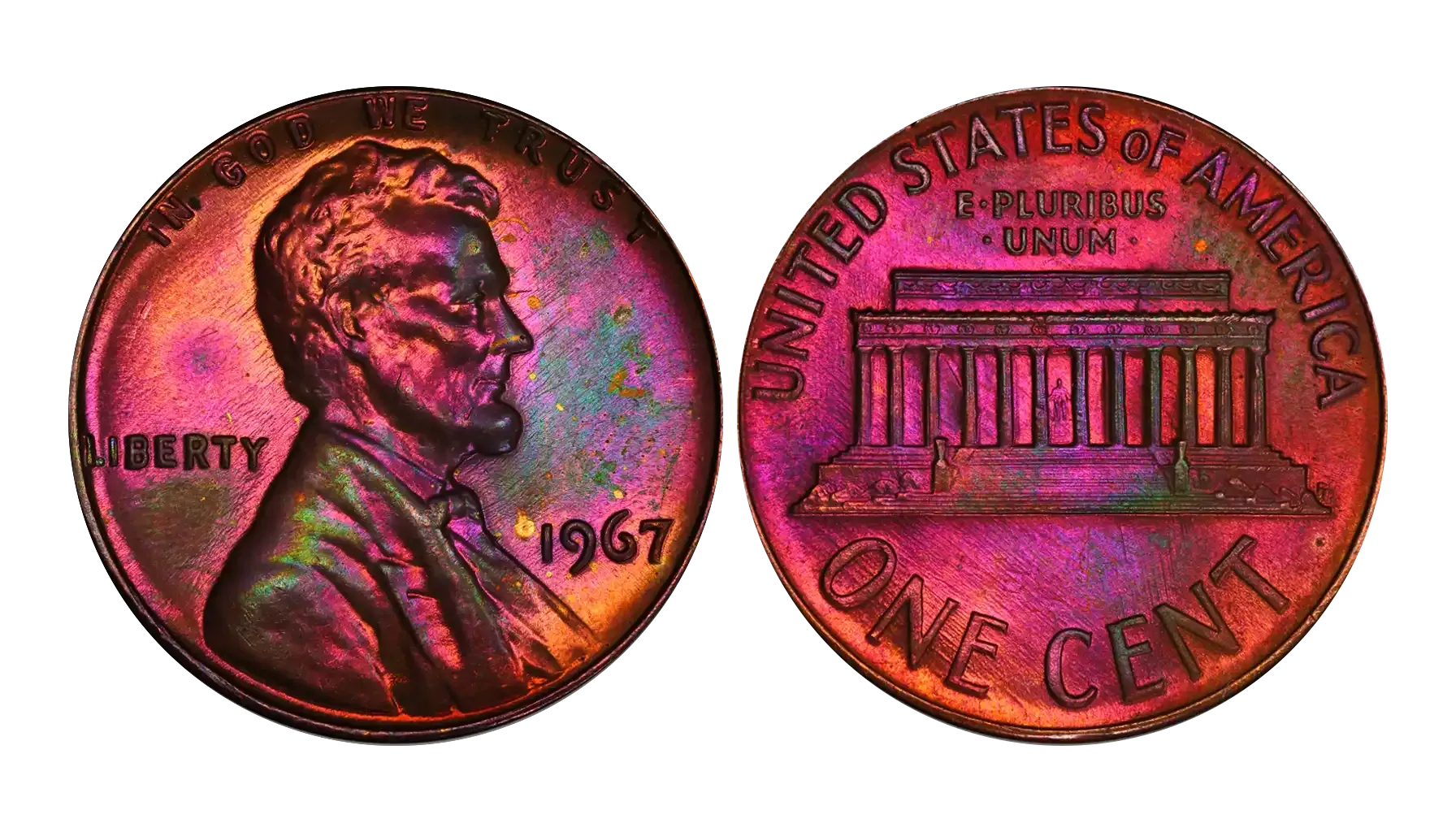Contents:
Heavily circulated, barely noticed, rarely obtained on purpose... What else might so unfairly define a coin with a great legacy but unrecognizable status in the numismatic sphere? So lucky are we to witness a period when the modern coin-collecting industry gradually turns to appreciating long-forgotten varieties and condition rarity over just intrinsic metal value.
The Jefferson nickel series began in 1938 and has since dazzled with dozens of issues, some of which may be lost in the shadows of their more prominent counterparts. In this carefully prepared material, let us focus on one particular instance, i.e., 1953 nickel, check which features identify this coin as valuable, and define its current worth on the collectibles market.
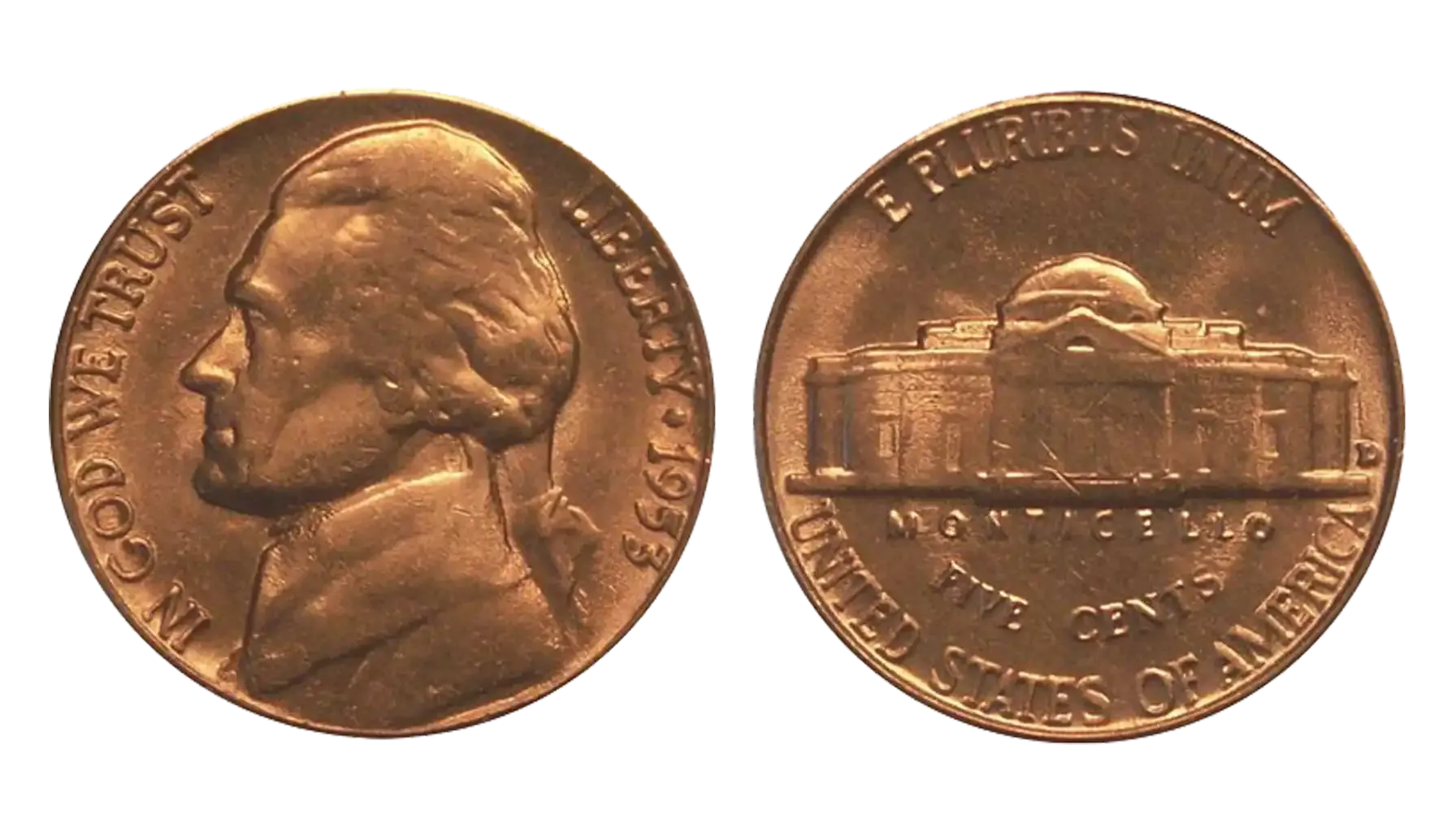
1953 Jefferson Nickel: Quick Facts
Coin Name | 1953 Jefferson Nickel |
Obverse Design | A left-facing profile of Thomas Jefferson, the third President of the United States, framed with the inscriptions “IN GOD WE TRUST” along the left edge, “LIBERTY” positioned horizontally to the right, and the year “1953” next to the previously mentioned word (by Felix Schlag) |
Reverse Design | A picture of Monticello, Jefferson’s Virginia estate, shown in a neoclassical front view, along with (from top to bottom): “E PLURIBUS UNUM,” “MONTICELLO,” “FIVE CENTS”, and “UNITED STATES OF AMERICA”. The mint mark (in case of the Denver- or San-Francisco-born coins) is positioned to the right of the estate (by Felix Schlag) |
Composition | 75% copper, 25% nickel |
Weight | 5.00 grams |
Diameter | 21.2 mm |
Edge | Plain |
Mint Marks | No mint mark for Philadelphia, “D” for Denver “S” for San Francisco |
Key Varieties | 1953-S “Micro S” |
Notable Features | Full Steps designation* |
Mintages per Type and Circulation Rarity
The 1953 nickel was struck during the heart of the series' production run, with numerous early legends having been released and accepted by collectors on an international level.
In fact, it was launched with the introduction of the 1938 nickel, which was meant to replace the old-fashioned Buffalo design (though its modified version has been lately utilized in the series again). This mid-century period was finally stabilizing, as nations finally reached the post-war economic goals and increased interest in numismatics as a serious hobby.
Related articles: 1928 Buffalo Nickel: Rarity, Errors, and What It Is Worth
Although the 1953 issue was not originally considered extraordinary, changes in minting quality, die wear, and strike sharpness across the three mint locations (Philadelphia, Denver, and San Francisco) would later give rise to niche varieties and condition rarities. So, let us take a look at these varieties one by one.
1953 5C (Regular Strike)
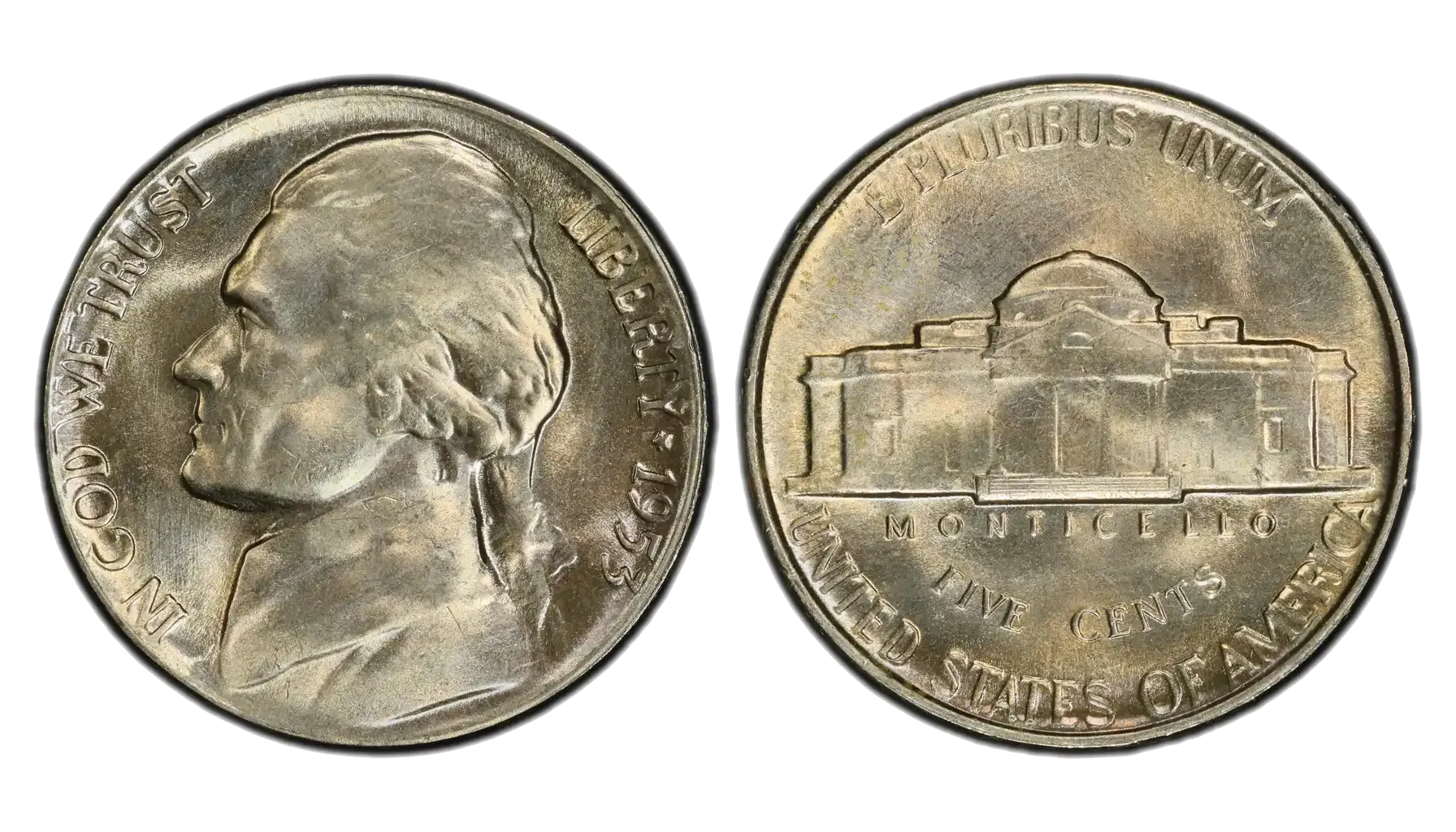
Produced by: Philadelphia Mint
Mintage: 46,644,000
Auction Record: $8,050 for MS65
The 1953 Philadelphia Mint issue is, as is customary, a common group in circulated grades, which becomes increasingly scarce in higher mint-state levels, especially when a 1953 nickel no mint mark bears sharp details and clean surfaces.
1953-D 5C (Regular Strike)
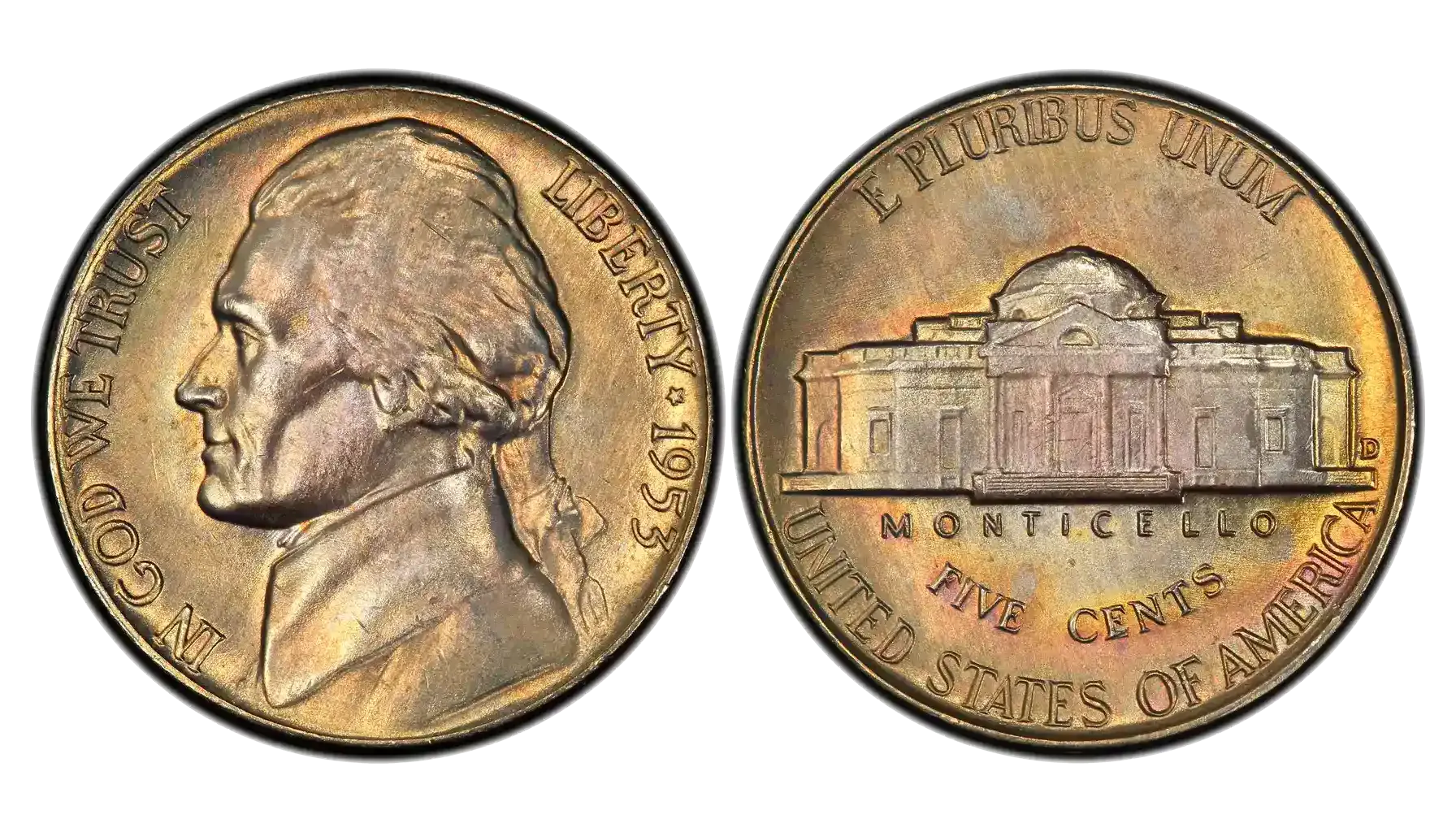
Produced by: Denver Mint
Mintage: 59,878,600
Auction Record: $15,275 for MS67FS
The Denver Mint, on its part, was the most productive facility with numerous coins well-preserved (which cannot boast the extraordinary 1953 Jefferson nickel value), yet top-grade Full Steps 1953 D nickel examples are notably rare and command high premiums at auction.
1953-S 5C (Regular Strike)
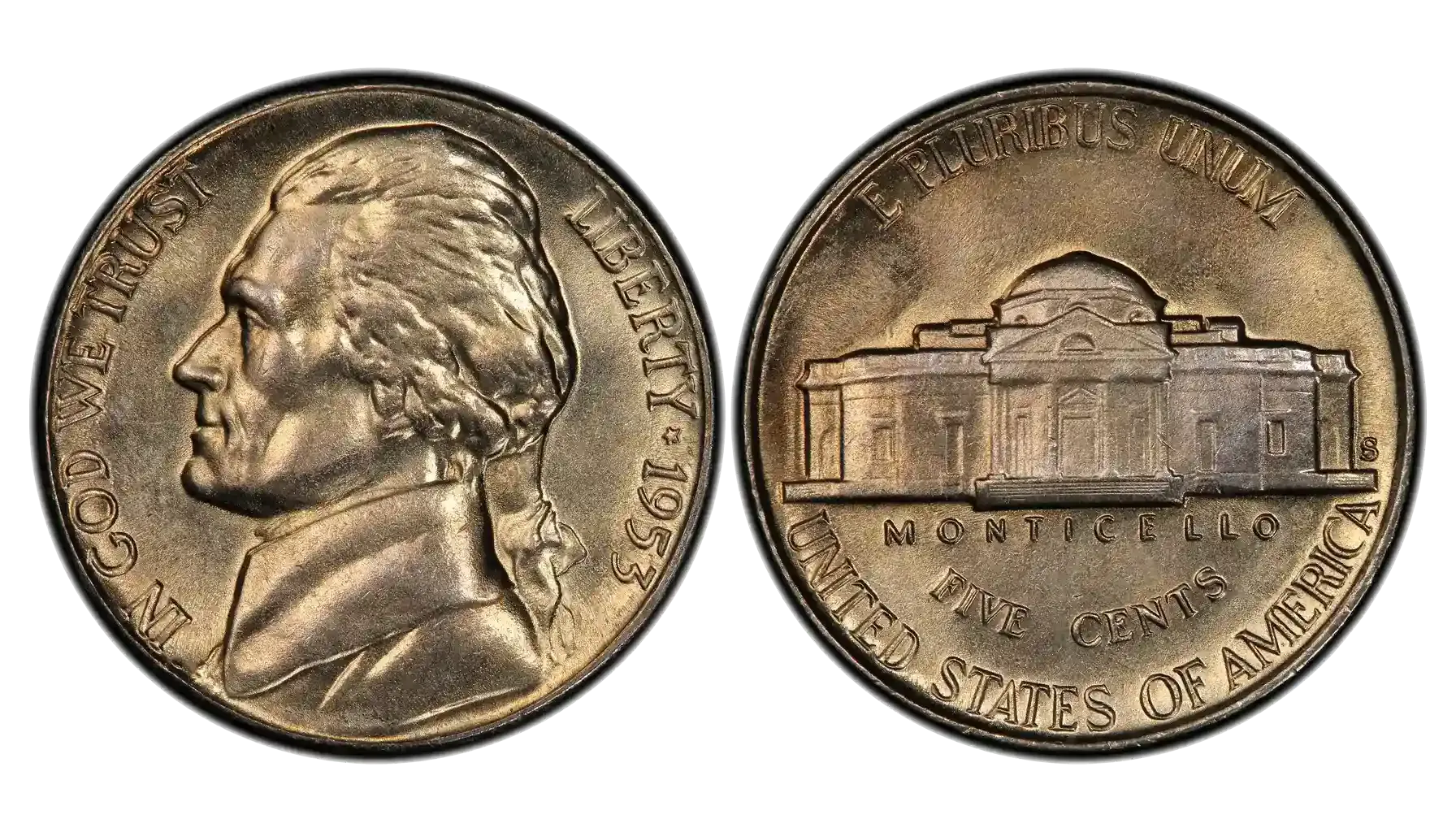
Produced by: San Francisco Mint
Mintage: 19,210,900
Auction Record: $24,000 for MS65FS
This issue is the rarest of the three regular strikes and is especially elusive with Full Steps. What is more, according to Jaime Hernandez, the 1953 S nickel is the most difficult Full Steps Jefferson Nickel between 1938 and 1960 to find.
1953 5C (Proof)
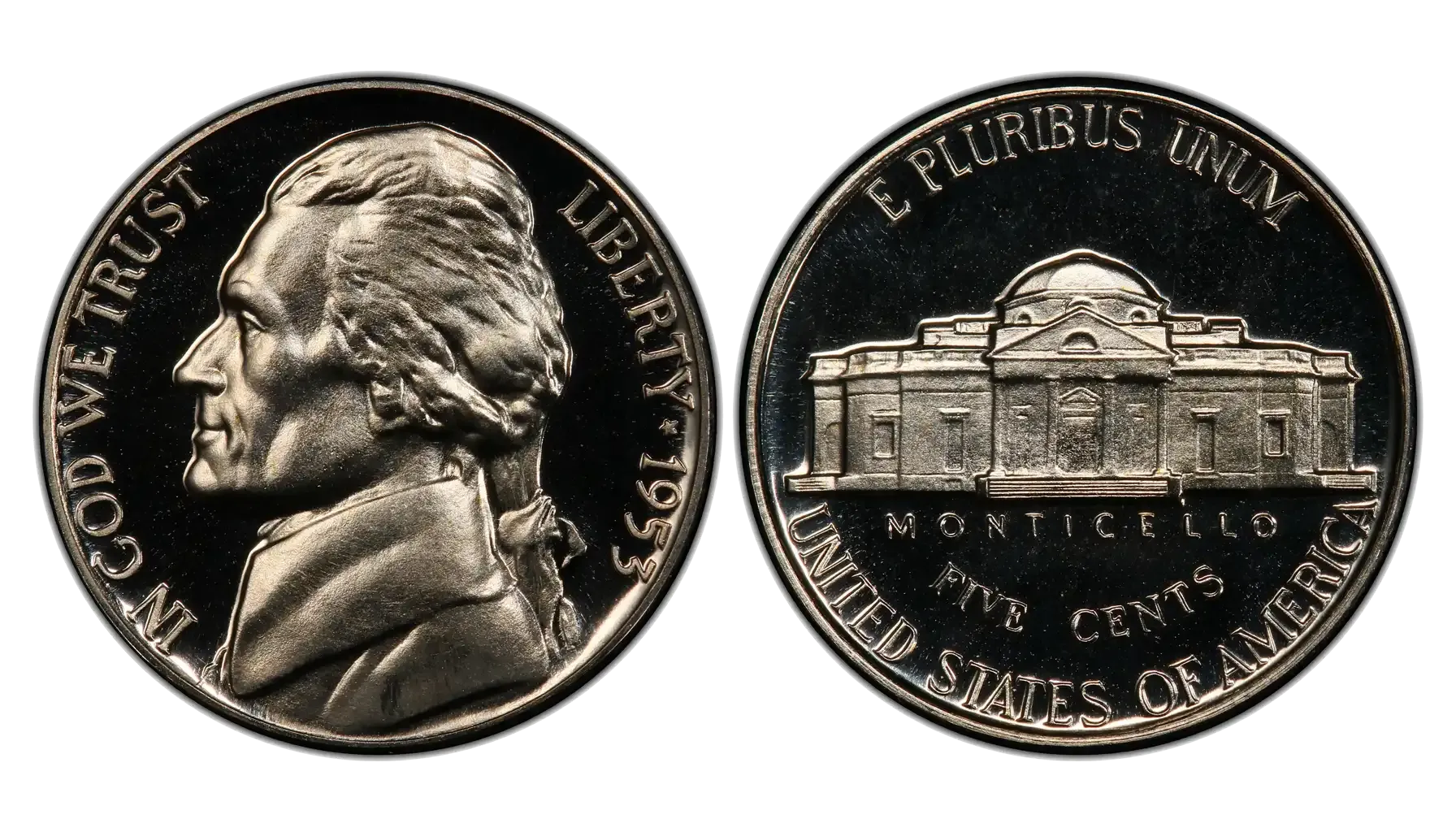
Produced by: Philadelphia Mint
Mintage: 128,800
Auction Record: $15,275 for PR68
Although this coin was minted exclusively for collectors in limited quantities, it is Deep Cameo Proofs that should be looked for. One may note that the 1953 nickel proofs are available with three major designations, i.e., PR (proof proper), CAM (Cameo), and DCAM (Deep Cameo), with the latter being the most valuable. Fewer than a dozen are known in PR69, and none have graded higher, which is why pristine specimens are exceptional rarities.
Valuable 1953 Nickel Errors
Coins produced in large quantities are not immune to errors. One may believe that flawless examples are the ones to obtain; however, the most valuable items are usually hidden behind anomalies that make coins unique. Below are a few notable errors that can be currently found on the numismatic market (and in circulation, too!).
Inverted D

Estimated value: $400
This rare variety features the Denver mint mark “D” punched upside-down, which may seem ordinary at first (though it is a rare occurrence which should not be missed).
Doubled Die Obverse

Estimated value: $310
Doubled die obverse errors appear when the coin die receives a misaligned impression from the design hub, causing parts of the image to be doubled (the same refers to doubled die reverse, too). On 1953 nickels, this may be seen in areas like “IN GOD WE TRUST,” “LIBERTY,” and the digits of the date.
Lamination Error
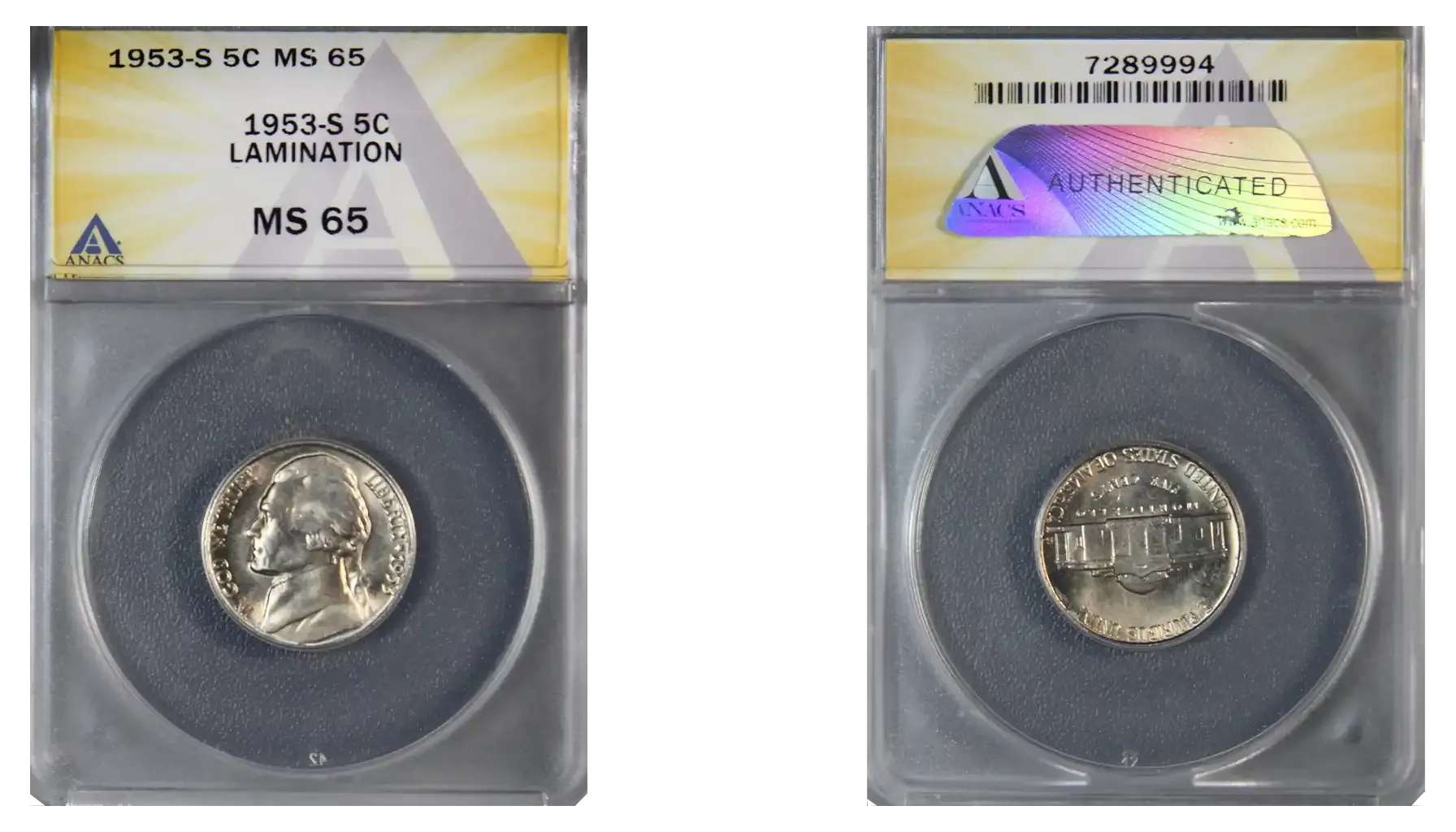
Estimated value: $66
Lamination errors are caused by impurities or structural weaknesses in the metal alloy used to make the coin. How does it happen? When the planchet cools and is struck, layers of metal may peel, crack, or flake away. On Jefferson nickels, lamination errors are generally found on Jefferson’s face, cheek, or jawline.
Key Factors That Influence the 1953 Nickel Value
The value of a 1953 nickel is a complex and fluctuating variable that is defined by several characteristics simultaneously. So, what should one pay attention to?
Condition and Grade
The overall condition of a 1953 nickel is the most influential factor. As per the Sheldon Scale, coins are given from 1 to 70 points (i.e., from P1 to G to MS70). For your information, circulated pieces are usually found in Poor, Good, Fine, or Very Fine condition, which all refer to a minimal value only. Mint State coins (MS60 and above), on their part, see a significant increase in price.
Special Designations
The most essential designation that may be applied to Jefferson nickels is "Full Steps.” As such, “Full Steps" refers to a Jefferson nickel grading designation that indicates that all five or six steps at the base of Monticello are clearly struck and fully separated from one another. Coins with Full Steps can fetch hundreds or even thousands more than non-FS coins of the same grade.
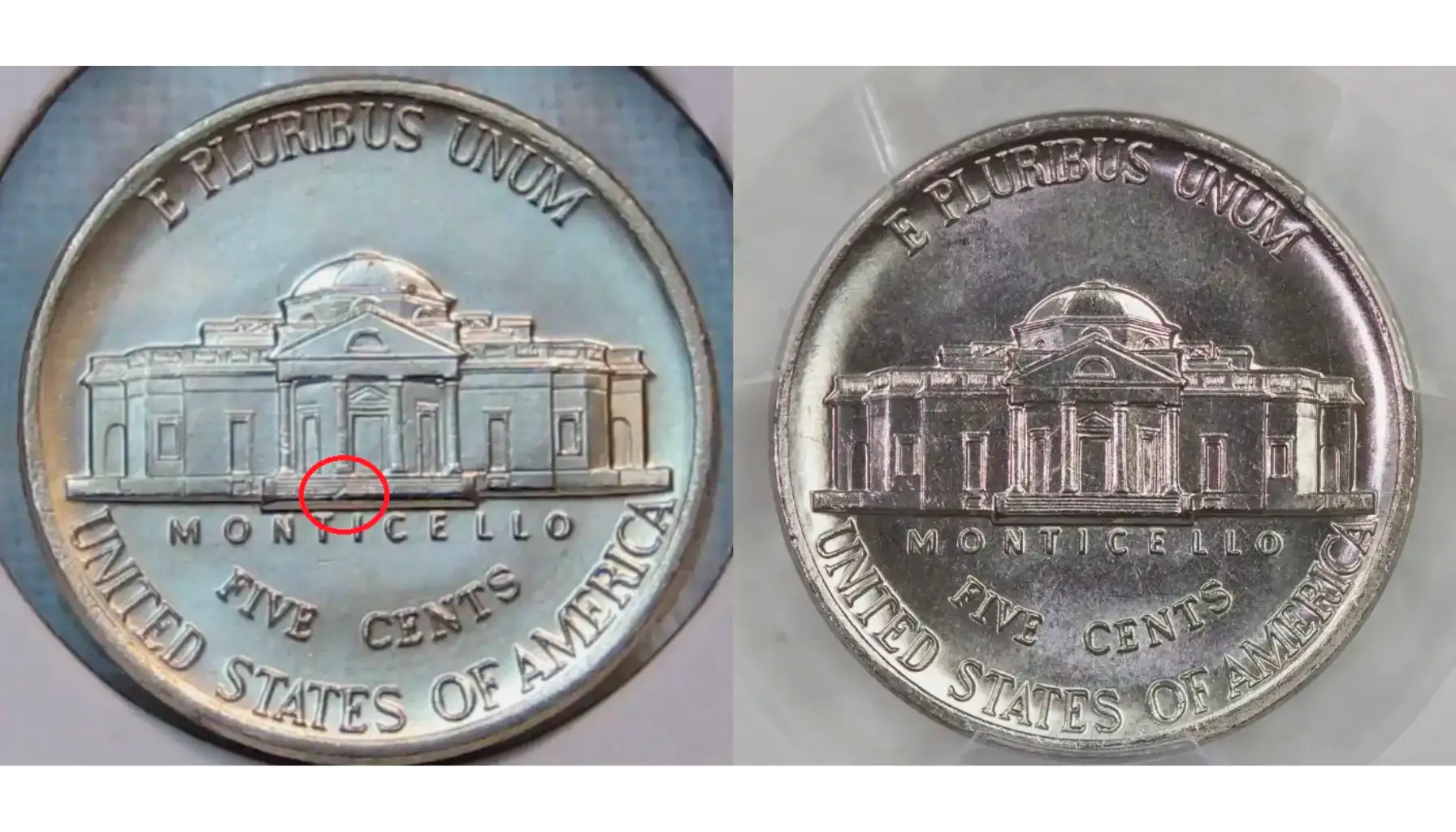
Mint Mark and Rarity
Coins minted in San Francisco (S), Denver (D), and Philadelphia (no mint mark) may differ in price. This comes from various mintage figures and consequent preservation levels of these groups. However, if the major part of the coins (e.g., proofs) has been preserved from the very start, they might not be as valuable as those with higher mintages, yet with fewer preservation mechanisms applied.
To prove the authenticity of coins, one may appeal to the respected grading services like NGC or PCGS to obtain relevant certificates and, hence, boost the value. The reason is obvious: documents may convince the potential buyers of the coin’s quality and legitimacy.
How Much Is a 1953 Nickel Worth? Value Chart
Is a 1953 nickel worth anything? As such, the answer mainly depends on your coin's condition and the factors mentioned above. Indeed, the majority of examples are well circulated and, thus, may only be worth face value or slightly more. Uncirculated or high-grade coins, though, should be valued higher anyway.
As soon as coin prices are subject to market trends, auction results, and collector demand, it is vital to stay up to date with the latest evaluations when buying or selling. So, what is a 1953 nickel worth?
Mint / Type | Circulated | MS60–MS67 | Full Steps |
1953 | $0.05–$0.50 | $2–$1,000 | up to $7,250 (MS66+FS) |
1953-D | $0.05–$0.50 | $2–$1,500 | up to $7,750 (MS67FS) |
1953-S | $0.05–$0.75 | $2–$2,500 | up to $23,000 (MS66FS) |
1953 Proof | N/A | N/A | up to $13,500 (PR69DCAM) |
To keep track of the current coin values, try Coin ID Scanner, our smart tool for coin identification, error detection, and real-time price estimates right from your phone.
Do not neglect numismatic creations that may seem irrelevant or insignificant. Their worth is usually hidden behind their appearance and can be revealed over time.

